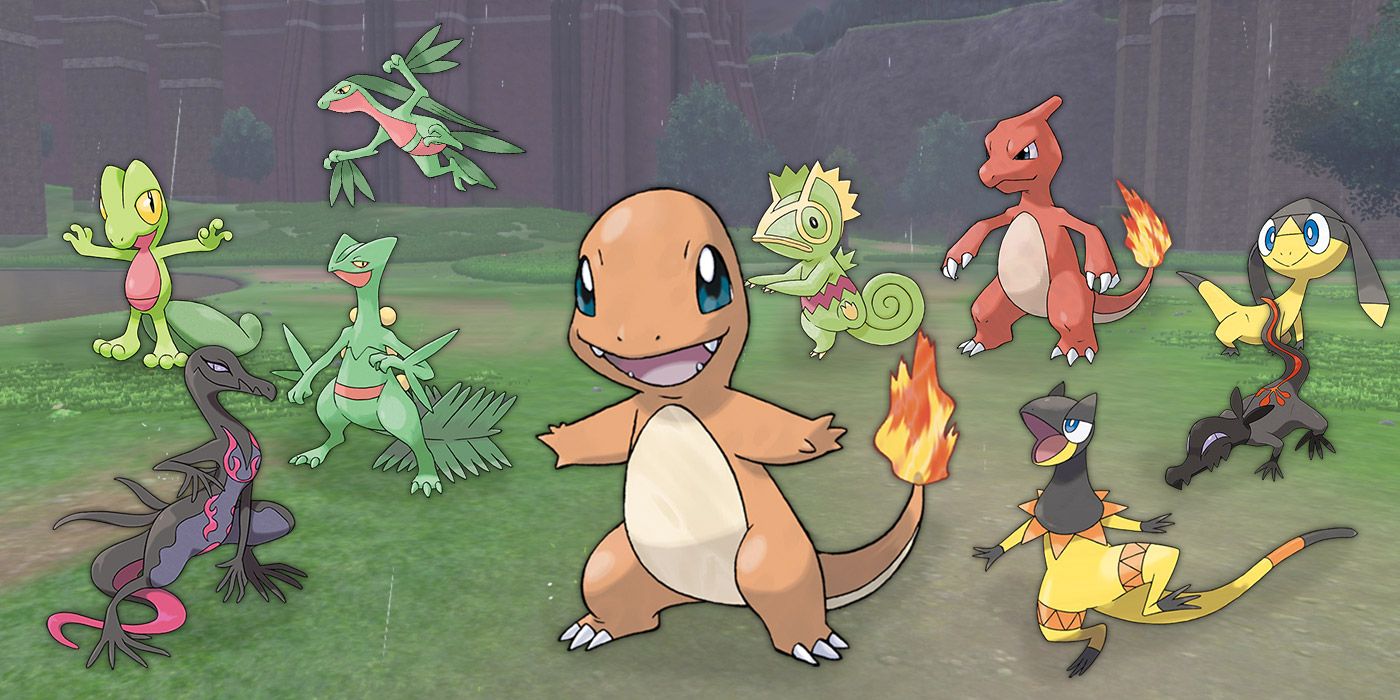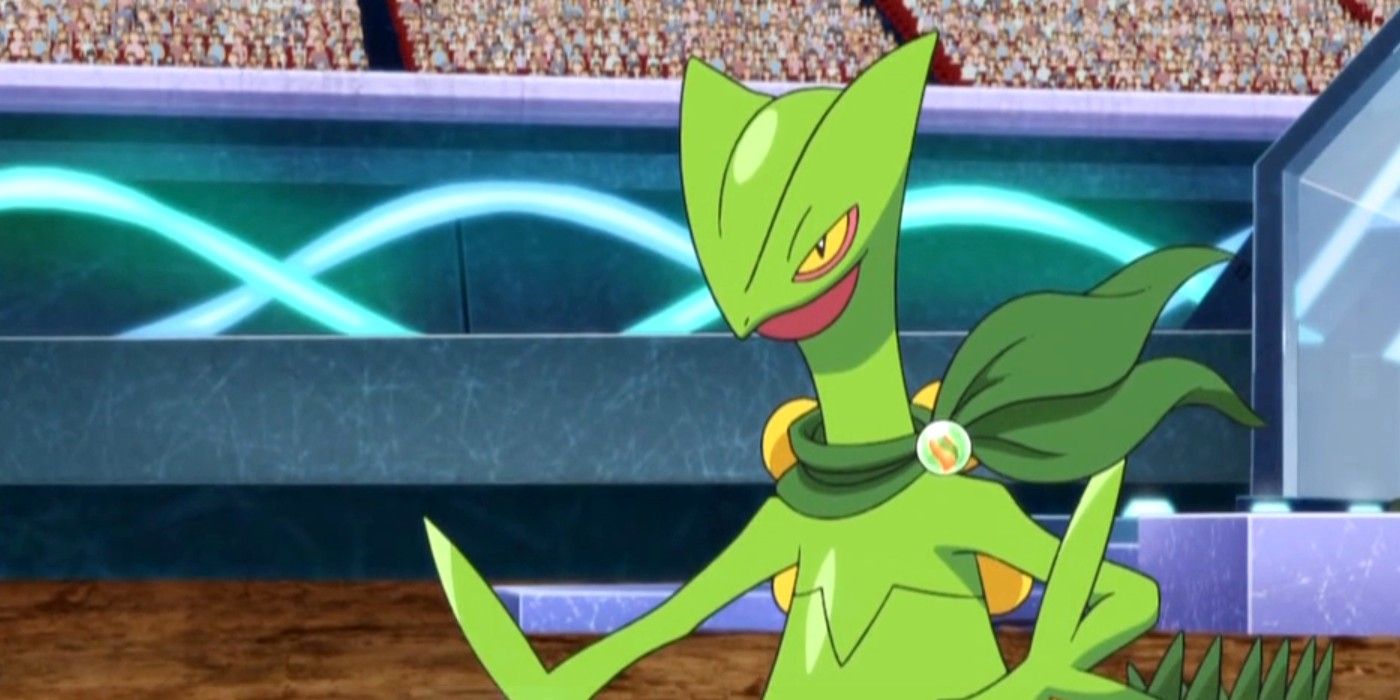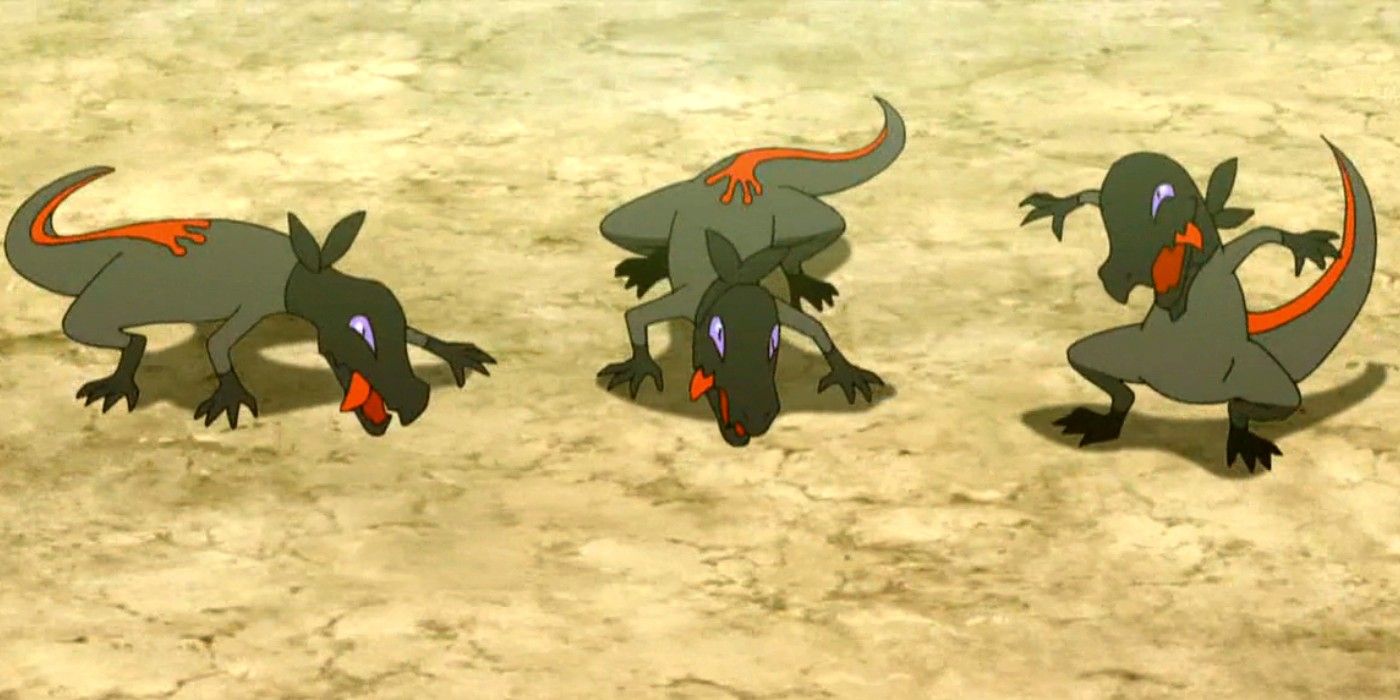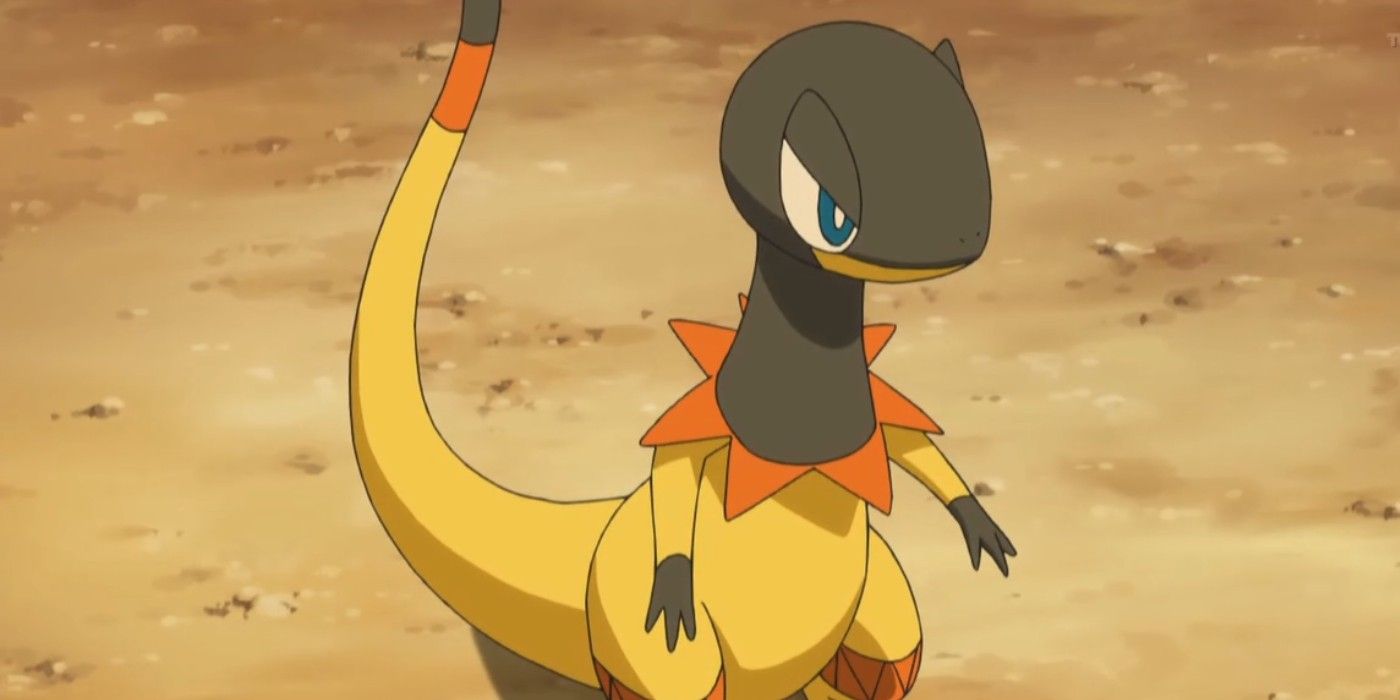The Pokemon franchise is on its 8th generation, which means that the number of Pokemon available to catch and train is higher than ever. Even people who don't play the games are aware of the iconic Pikachu, and maybe some other well-known monsters like Charizard and Gyarados. Some people, however, have played enough of the games that identifying one of the 800+ creatures is no big deal.
Even after 8 generations, the designers who create the looks and lore for each Pokemon still find plenty of sources of inspiration, whether those are from inanimate objects, real-life creatures, or beasts from legend and myth. There are some types of animals in the real world that share common characteristics that translate well into Pokemon, like mice and other rodents (giving fans Pikachu itself). This week, it's interesting to take a look at creatures that are prolific both on Earth and on the world of Pokemon: lizards.
Treecko, Grovyle, and Sceptile
All three of the Pokemon in this evolutionary line share characteristics of various lizards, including a genus called Uroplatus, or "leaf-tailed geckos." While in the real world these creatures' tails look similar enough to leaves to blend in with surrounding foliage, the Pokemon line takes this comparison more literally by giving them plant-creating power moves like Bullet Seed. Grovyle and Sceptile have also been compared to dinosaurs, and as many people know, the word "saurus" comes from the Greek word for lizard or reptile. Like the leaf-tailed gecko, Grovyle uses its leafy appendages to blend into its environment. Treecko's FireRed and LeafGreen Pokemon entries claim that it uses small hooks on its feet to scale walls and ceilings, similar to the tiny hairs on pads on real lizards' feet.
Salandit and Salazzle
These lizard-like Pokemon first appeared in Alola, an island region with a large volcano well-suited to Salandit's fire-type. Salandit is unusual in that only females of its species evolve at level 33 into Salazzle, and males stay unevolved for their entire lives. These Pokemon's names and poison-types point to salamanders as being a source of inspiration. This ties in well with their fire-type as well, since salamanders are associated with fire in sources as far back as classical Roman thought. Salandit keeps fire in its tail and secretes poisonous toxins in the form of natural moves like Smog and Poison Fang. Ancient Roman naturalist Pliny the Elder claimed that salamanders are extremely poisonous and can extinguish flames with their bodies, making Salandit and Salazzle something inspired both by real-life creatures and by beasts from legend.
Helioptile and Heliolisk
These two Pokemon also appear to be inspired by a specific type of lizard, namely the frill-necked lizard, which is native to parts of Australia and New Guinea. Heliolisk's frill can flare and generate a massive amount of electricity according to its X and Y Pokedex entries, enough to power a large building. Helioptile learns Thunder and Thunderbolt at higher levels, which are both powerful Electric-type moves that may not be able to actually power a huge building, but can certainly pack a punch in battle. And, interestingly for normal/electric types, these Pokemon can Surf, perhaps in reference to another type of lizard, the common basilisk, which can run on water.
Charmander and Charmeleon
This list would not be complete without including the very first lizard-like Pokemon players encounter in the very first Pokemon game: the fire-type starter Charmander (and its evolution Charmeleon). Charizard, the fully evolved form, is arguably very lizard-like, but looks more like a mythical Dragon (contrary to its typing). Like Salandit and Salazzle, Charmander is clearly based partially on a salamander, thanks to its name, physical shape, and fire-type. Charmeleon's name comes from "char" and "chameleon," but that second choice may have just been based off the pun with combining a fiery word and a lizard type, since nothing about Charmeleon's moveset or Pokedex lore suggest that it can camouflage like a chameleon can.





